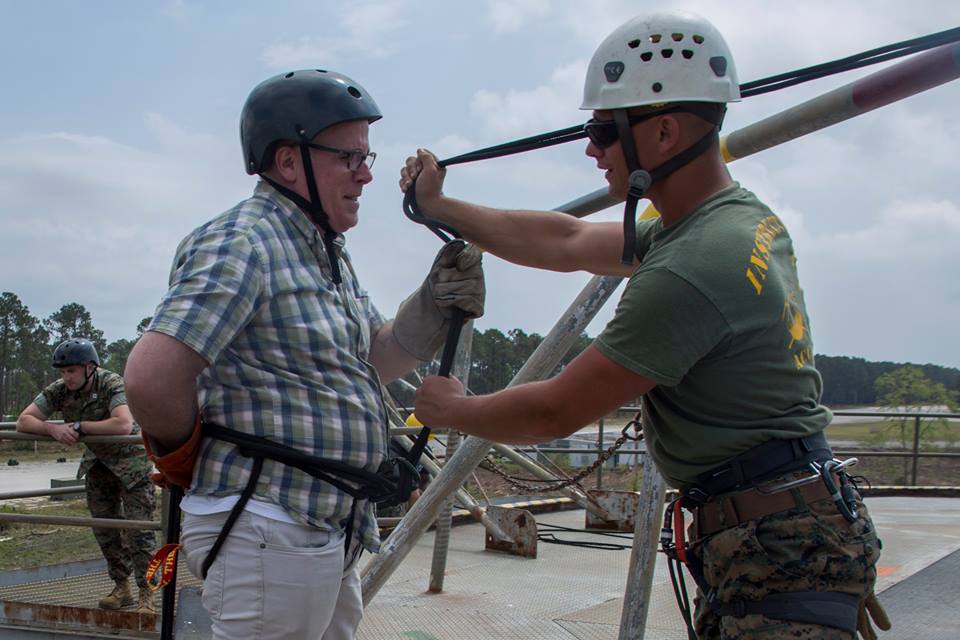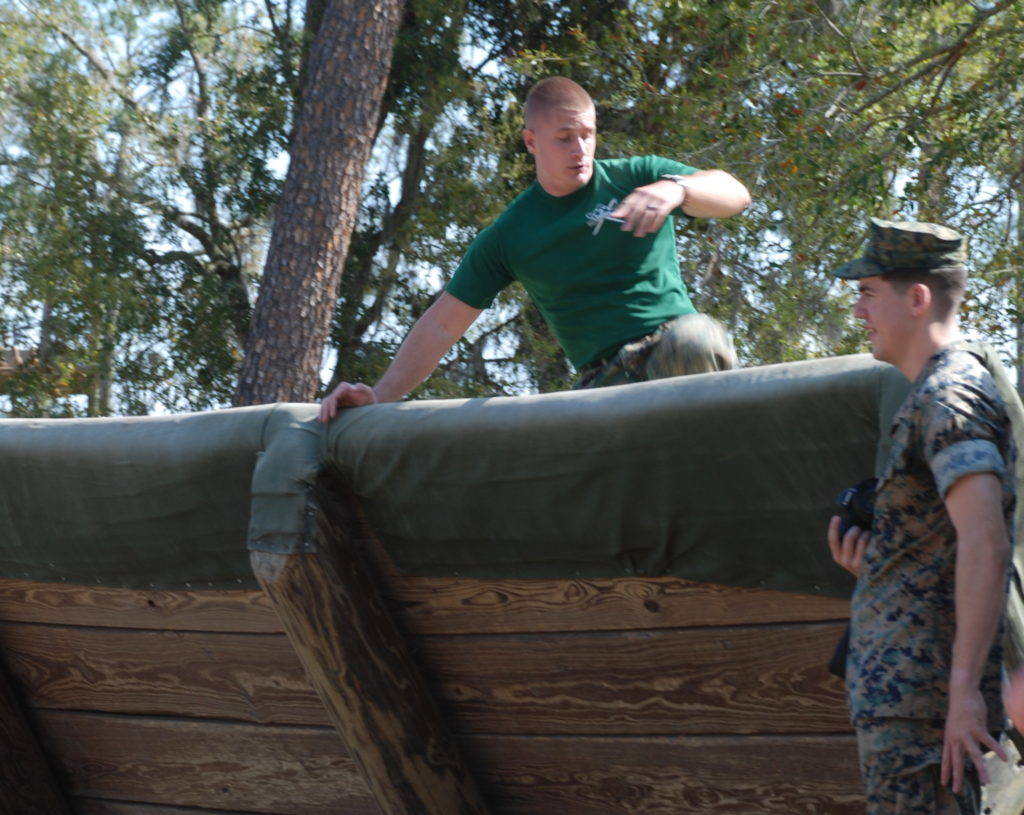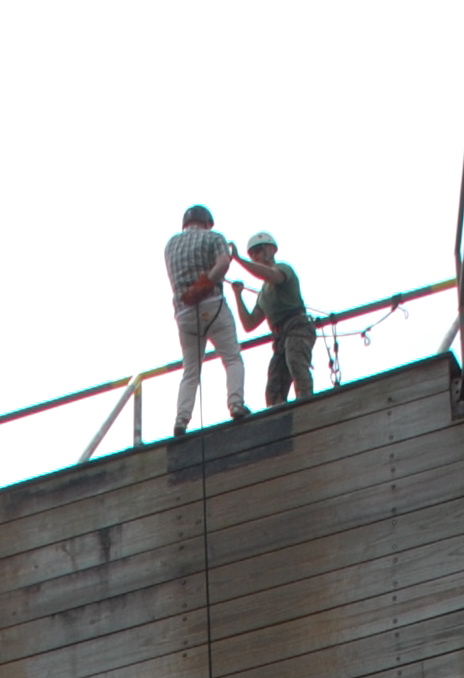(Warning: Contains coarse language.)
Heights have never bothered me very much. As a child, whenever my family would visit tourist attractions involving high places, I would always trot right to the rail, fence or wall and get on tippy toes for a good look. Mama would gasp, grab my collar and pull me back.
“Clay! Don’t go so close!”
And as she found herself nearer to the edge of safety than she wanted to be, having drawn close to grab my collar, she would look out and wail.
“Ohhhh! I don’t like this! Let’s go down.”
That’s how it was on high places. The Eiffel Tower, Louisiana State Capitol and Washington Monument come to mind as trot-grab-wail sites. The Washington Monument doesn’t even have an outdoor deck but Mama still wailed when she looked out of the window.
The Grand Canyon was a disaster. Mama grew more stern as I rushed to the rail mere inches from the edge of the mile-deep chasm, and the wail became a growl.
“Get. Back. Right. Now.”
And so it was that when, three days ago, I found myself standing before the rappel tower at Marine Corps Recruit Depot, Parris Island, S.C., I thought, “I can do this. No problem.”
Earlier in the day, I had not felt so confident. The group of educators of whose four-day tour I was a part had visited the Confidence Course, a series of structures and exercises designed to build both physical and mental fortitude.
Staff Sergeant Patrick Maley demonstrated several stations of the course, belting out instructions with a raspy voice betraying the screaming that is part of every Parris Island Marine’s daily life.
My tour group was offered the chance to attempt some of the obstacles, and many participants chose to do so. Having reached an age and state of mind where broken bones concern me, I declined to perform the Inverted Wall, Balancing Logs or Dirty Name.
It surprised me, then, that when I beheld the rappel tower a couple of hours later, the desire to rappel came so easily.
After brief instructions by Staff Sgt. Tyler Illian, who, the day before, in another capacity as range instructor, had seen fit to hand me a loaded M-16 — “Good job!” he said after I took out a few pretend-enemies at 100 yards — someone wrapped a rope around my waist and legs and trussed me tightly. I was not able to take in a full breath but that seemed to be the point.
One reaches the top of the rappel tower by five metal staircases. Each step was a challenge because of the trussing of my loins.
Around a dozen Marines stood by to attach us to the ropes. Sgt. Chris Noffke, as wholesome-looking a fellow as you could imagine, took me through the safety evolutions, ran a rope through the carabiner on my waist, and told me to take my place, facing him, at the edge of the platform.
I turned and shuffled backward. This is where the fear of heights I never knew before Thursday was born.
I believe it wasn’t so much a fear of simply being 50 feet above the ground that rendered me frozen. No, it was more a fear of losing control of my rope, falling four stories, garroting myself around the waist, and swinging upside down, just out of reach of the Marine on the ground who was holding the bottom of my rope.
“Keep your legs straight,” Sgt. Noffke said. “And just lean back and walk down the wall.”
“I’m gonna need a second,” I replied.
“Take your time. There’s no way you can fall. The Marine at the bottom has your rope.”
I had no reason whatsoever to doubt what Sgt. Noffke was saying to me. Considering that 20,000 recruits rappel down that wall every year and that he instructs many of them, I believed wholeheartedly that I would not die if things went south. I accepted the physics and rope strength and everything else that should have let my right hand loosen from the rope, allowing me to descend.
“I’m gonna need another second,” I said while puffing air from my cheeks.

I leaned back slowly. Five, 10 degrees from plumb I leaned. I heard other Marines telling their victims, “Don’t look down,” but that wasn’t an issue for me. I focused only on my hands and the rope in them. All that was necessary for my descent to begin was the extension of my right arm from behind my back to my side, and the loosening of my clenched right fist so the rope could pass through it.
Strictly speaking, that wasn’t all there was to it. For the situation to advance beyond my modest rearward tilt from the rappel tower platform, there would have to be a series of synapses by which my brain would convey the desire to execute those simple muscle movements to the relevant appendages.
Three days ago, the synapses failed me.
“I’m sorry but this isn’t going to work,” I said.
“No problem,” Sgt. Noffke said. He leaned over the abyss and yelled down, “Off rappel!”
And I was off rappel.
I stepped back, thinking that watching others go down the wall would help my confidence. But I was wrong about that. The first woman to follow me, as she began her backward lean, said, “Shit, shit, shit” with increasing volume. “Shit” turned to “fuck, fuck, fuck.” But her hands worked better than mine and she managed to lower herself. The “fuck, fuck, fuck” continued until her head disappeared.
“Good job!” Sgt. Noffke shouted into the void a minute later.
The second woman I watched leave the platform managed a more civil vocabulary, and, to her credit, she went down quickly. I think, however, that she did not so much walk down the wall as slide down the rope. The last thing I saw was a pair of eyes bugging out of a skull.
I accepted my failure of will and headed back to the stairs. An NCO I didn’t recognize said, “Really?”
“Sticks and stones, Sergeant Major. Sticks and stones.” And I walked past him and returned to earth.
It would be satisfying now if I could say that I had rappeled at Parris Island. But I can’t.









